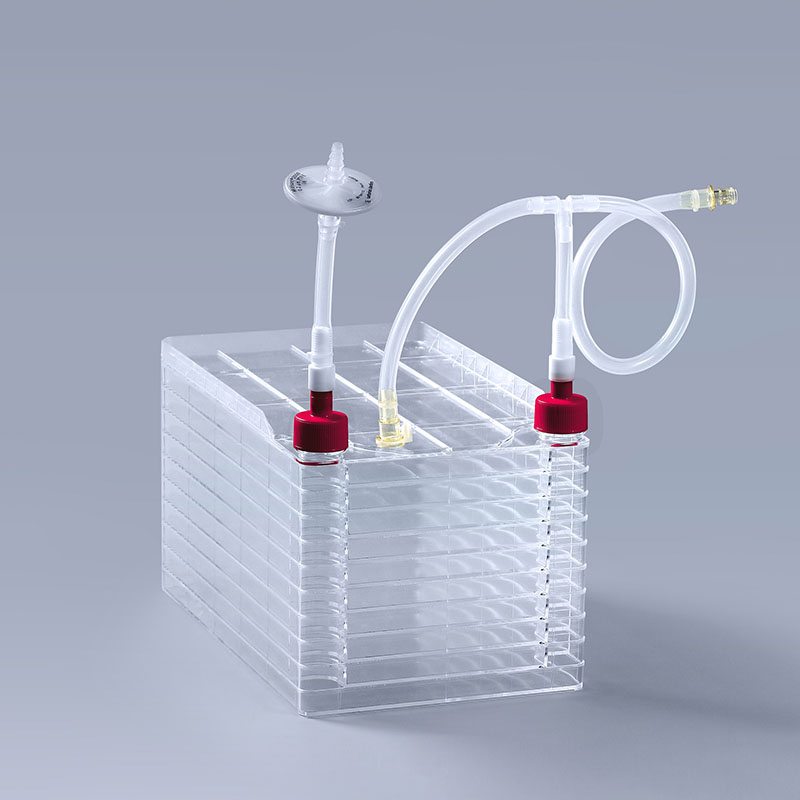In the field of biomedicine, cell culture is a crucial technology. From drug development to tissue engineering, cell culture techniques are indispensable. In this regard, cell factories offer an innovative and efficient solution.
A cell factories is a multi-layered cell culture vessel, expertly designed to meet various cell culture needs. This cell culture tool employs advanced design concepts, providing a controlled environment for cell growth, ensuring the efficiency and safety of cell proliferation.

The primary advantage of cell factories lies in their multi-layered structure. This design allows for more cell cultures within the same space, thus enhancing production efficiency. They are available in common configurations such as 1-layer, 2-layer, 5-layer, 10-layer, and 40-layer, catering to different scales of cell culture needs. For large-scale cell cultures, such as vaccine production or therapeutic drug manufacturing, higher multi-layer cell factories may be required. For laboratory research or small-scale production, smaller configurations can be utilized.
In summary, cell factories are an innovative and efficient cell culture solution. Their unique multi-layer structure and flexible size options provide researchers with ample operational space, benefiting both large-scale production and laboratory research. As technology continues to advance, we have every reason to believe that this cell culture tool will play an even greater role in the future of biomedicine.
The FAI climbed 5.9 percent year-on-year in the first 11 months of 2018, quickening from the 5.7-percent growth in Jan-Oct, the National Bureau of Statistics (NBS) said Friday in an online statement.
The key indicator of investment, dubbed a major growth driver, hit the bottom in August and has since started to rebound steadily.
In the face of emerging economic challenges home and abroad, China has stepped up efforts to stabilize investment, in particular rolling out measures to motivate private investors and channel funds into infrastructure.
Friday's data showed private investment, accounting for more than 60 percent of the total FAI, expanded by a brisk 8.7 percent.
NBS spokesperson Mao Shengyong said funds into weak economic links registered rapid increases as investment in environmental protection and agriculture jumped 42 percent and 12.5 percent respectively, much faster than the average.
In breakdown, investment in high-tech and equipment manufacturing remained vigorous with 16.1-percent and 11.6-percent increases respectively in the first 11 months. Infrastructure investment gained 3.7 percent, staying flat. Investment in property development rose 9.7 percent, also unchanged.
 English
English


















































